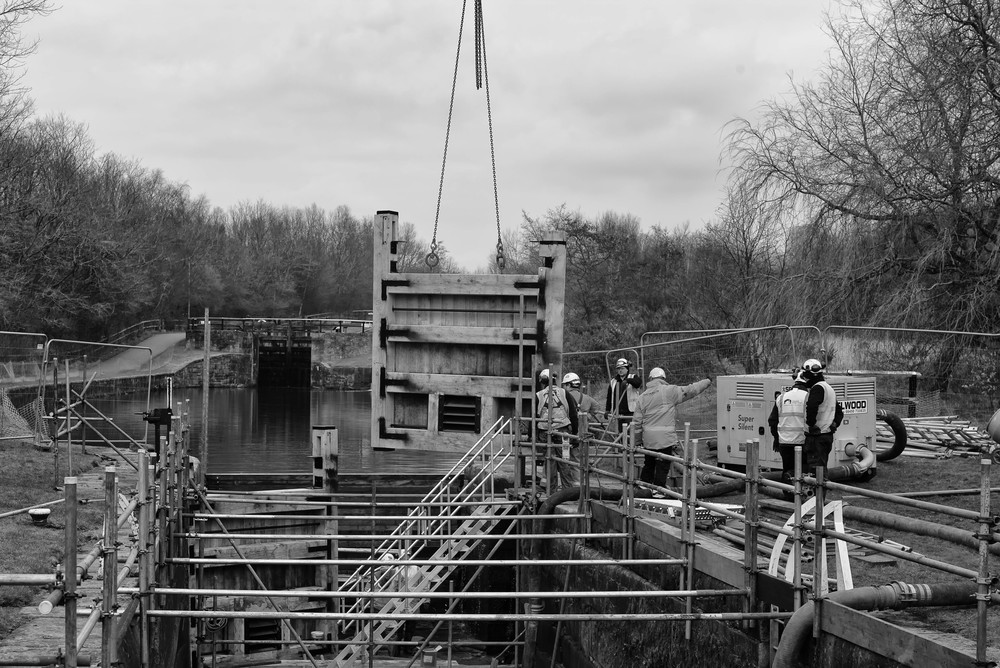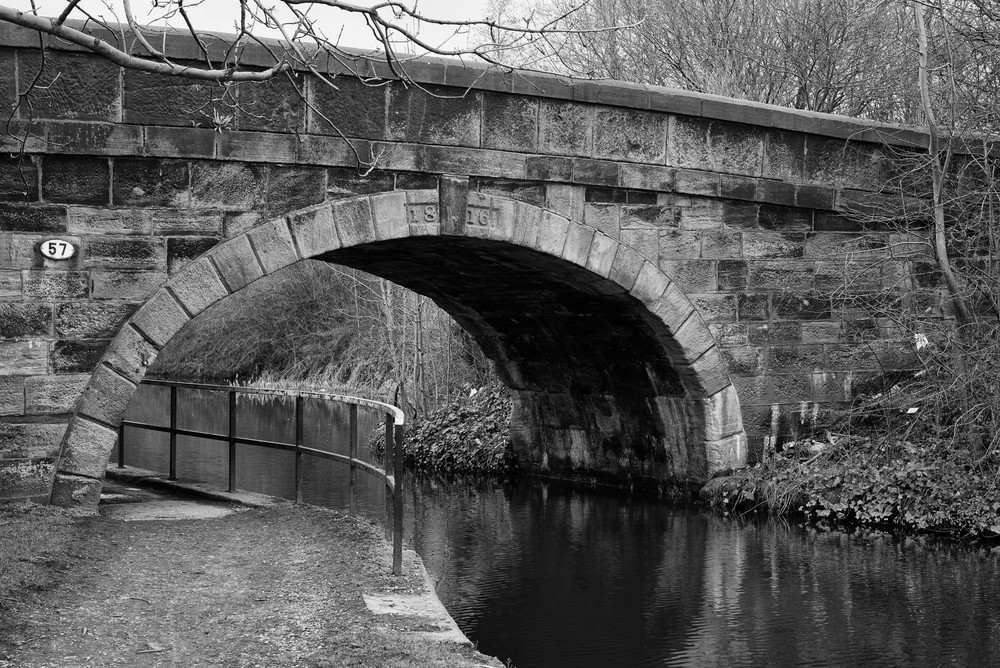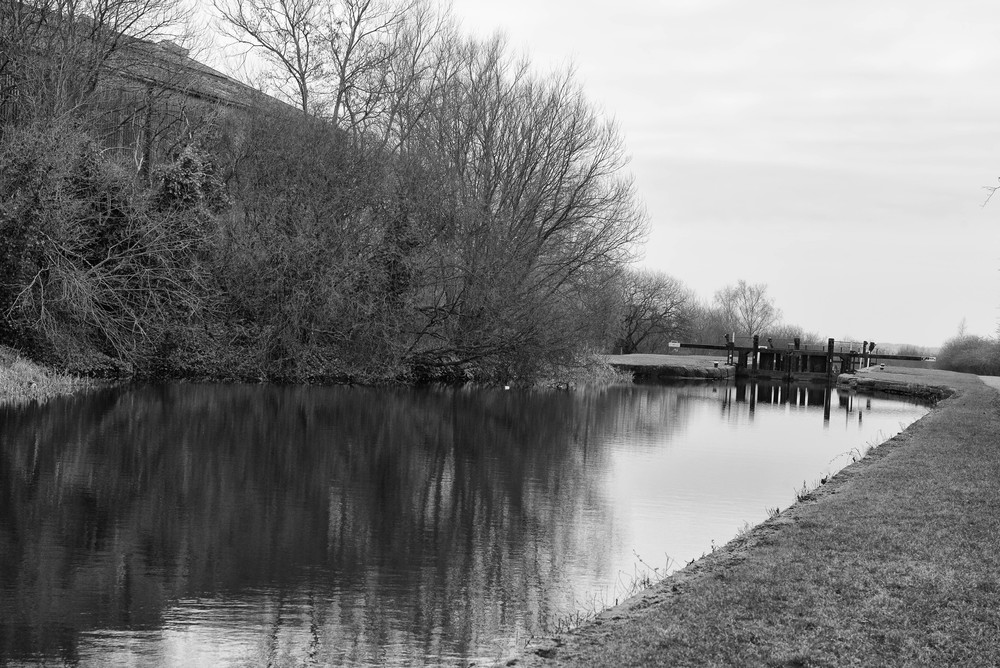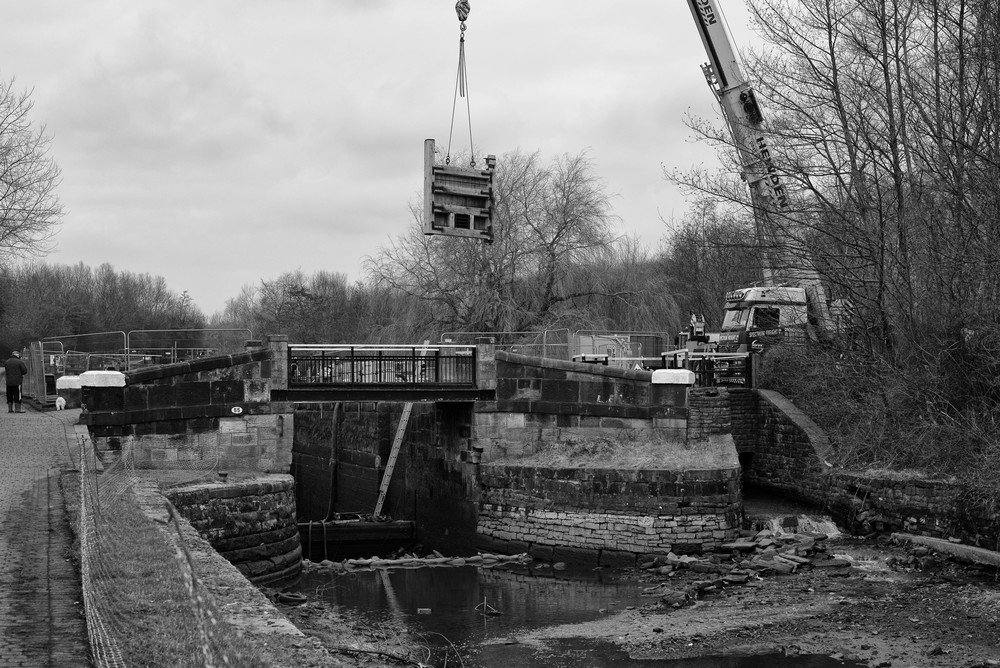The flight of 23 locks on the Leeds & Liverpool canal, leading down through Ince to Wigan, is the true road to Wigan Pier. This massive undertaking, which lowers the canal by all of 215 feet, is one of the most powerful evocations of the industrial revolution that transformed Britain, particularly this section of South Lancashire, in the 18th century.
The 127-mile-long canal, from the heart of the Yorkshire industrial belt, across the Pennines and down to the port of Liverpool, took 46 years to build. It was completed only in 1837, by which time the new-fangled railways were rapidly overtaking the waterways which had once been seen as the future of transport. It is remarkable that it has lasted right through the railway age and is still capable of operating as its creators planned.
I took all photographs in this article with Leica’s M-P and the
50mm Apo-Summicron-M ASPH lens

When I walked yesterday from the historic Cale Lane Bridge, between the second and third locks, down to Ince (where my great grandfather ran a prosperous grocery business), I was lucky enough to find maintenance work taking place on the lower flight. Huge 1.5-tonne lock gates were being lowered into place to keep this most impressive of navigable waterways in business. The gates and mechanisms are identical to those first installed 200 years ago and the technology has never needed improvement.

Over engineering was the order of the day in the early 19th century. The Cale Lane bridge, for example, was built in 1816 to withstand the passage of horse-drawn wagons of, perhaps, four tons. The builders could not have imagined that 200 years later it would be carrying 32-tonne trucks to the nearby recycling plant without a murmur.


Wigan Pier, which is actually a wharf on this very canal, is now a legend thanks to an Eton-educated socialist, Eric Blair, who was sent into the industrial heart of northern England to report on the conditions of the working class. Blair, complete with his prejudices, descended on Wigan, my home town, and the pier took its place in history. Writing as George Orwell, he created what many believe to be a rather unfair view of this historic Lancashire town, the Roman Coccium:
“Terribly cold,” he recorded in his diary. “Frightful landscape of slagheaps and belching chimneys. A few rats running through the snow, very tame, presumably weak with hunger.” The mill girls, scurrying to work in their clogs down the cobbled streets, sounded to him “like an army hurrying into battle”.
It was certainly a long way from the playing fields of Eton.

More reading:

